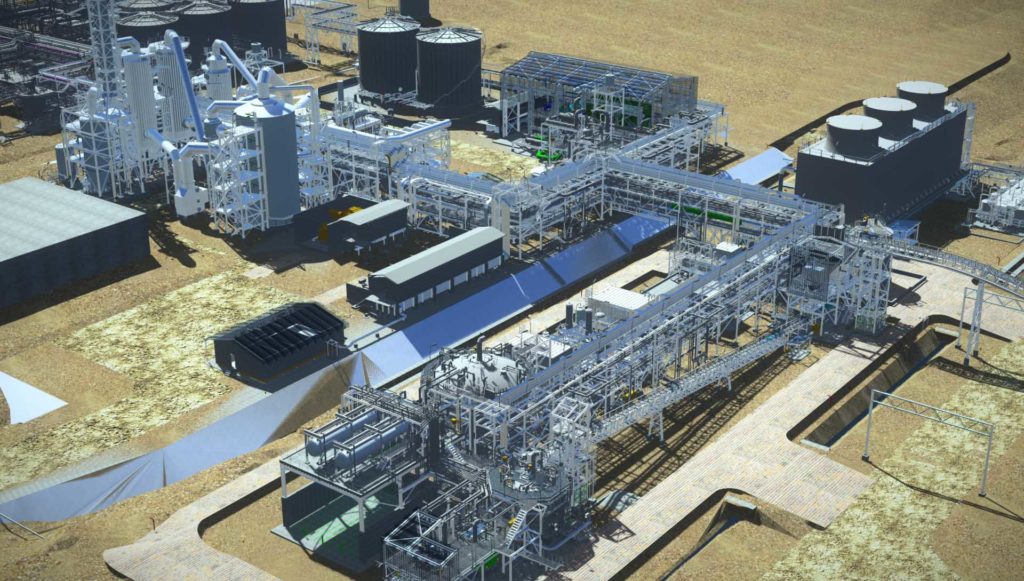Hatch was retained as the engineering, procurement and construction management (EPCM) contractor for a new sulphuric acid manufacturing plant in a remote southern province of the Democratic Republic of the Congo (DRC). The $245 million project included a 1,400 t per-day manufacturing facility and a 20 MW electrical waste heat power generation system with a thermal cooling tower. Given the high environmental risks of hauling acid to this remote area to support copper mining operations and the constraints on supply, the client fast-tracked the project timeline. Overcoming geographical and logistical challenges, Hatch succeeded in delivering the plant in under two years, from feasibility to start up.
Hatch used Bentley Systems’ plant open modelling applications to design a complete, intelligent digital twin to manage and share information among its engineering offices in Canada, South Africa, India, Australia, and the DRC. The project team decided not to produce traditional mechanical, piping, or structural general arrangement drawings and instead use the live model for all production needs. The project team moved engineering quality processes upstream using 3D modeling, enabling them to compress project timelines that would otherwise not have been possible using traditional drawing-based piping isometric quality processes.
This approach provided the project team with multiple alternative procurement strategies to lower bulk material costs. Bulk material purchases were determined directly from the 3D model components and free issued to the fabricator and installation contractor on site. The result was a 10% to 15% cost savings to the client in direct material requisitions. Moreover, transportation costs were reduced by a factor of four by shipping bulk piping materials instead of pre-fabricated piping spools. The impact of bulk shipping piping materials was significant, as all materials needed to be trucked 2,800 km on roads with sections that are gravel. Moving the quality processes upstream also saved three months on the schedule, as piping material was purchased before the isometric drawing production. Concurrently with the material supply process, Hatch’s global project delivery team produced piping isometric deliverables in a continuous “follow-the-sun” progression with teams across three time zones.
Structural steel was also on the critical path of the accelerated construction schedule. Using Bentley’s integrated structural solutions helped the project team to cut six weeks from the delivery schedule. The structural steel design team used Bentley’s integrated structural steel modeling solution to leverage the same 3D model for layout, analysis, design, and fabrication, producing deliverables directly to automated fabrication management systems.
These results were achieved through quality-controlled, component-based 3D modelling workflows, all managed in a connected data environment. The Hatch strategy resulted in a distributed project team able to choose from multiple procurement alternatives and allowed them to lower the cost of material supply and to streamline delivery, cutting months off the schedule. In addition, Bentley applications played a significant role in setting a new industry benchmark during commissioning by reducing production ramp up from six months to one week after completion of hot commissioning. The result was a substantial increase on the return of investment for the client’s operations.
“Hatch has done several paperless projects, and it established an improved digital way of working that we offer on all our projects,” said Randy McMeekin, Global Managing Director with Hatch. “The benefits our clients gain from our approach span not only the EPCM project delivery phase but extend well into operations and maintenance. We are excited with what Bentley is developing for digital twins and are committed to finding ways to further improve the outcomes from our clients with these technologies.”











